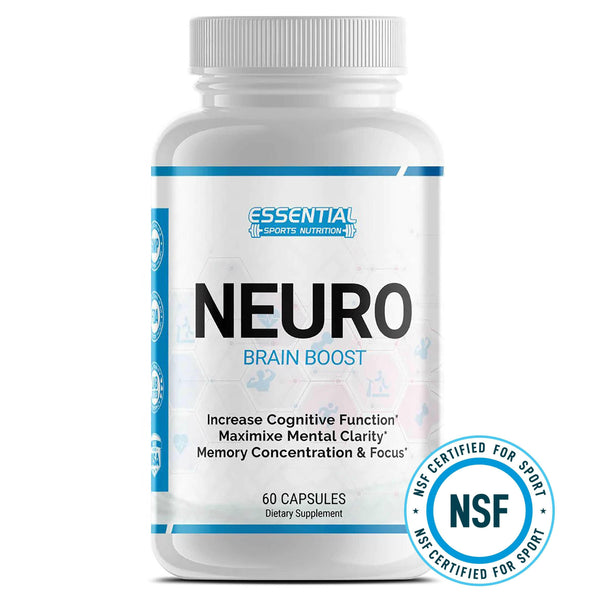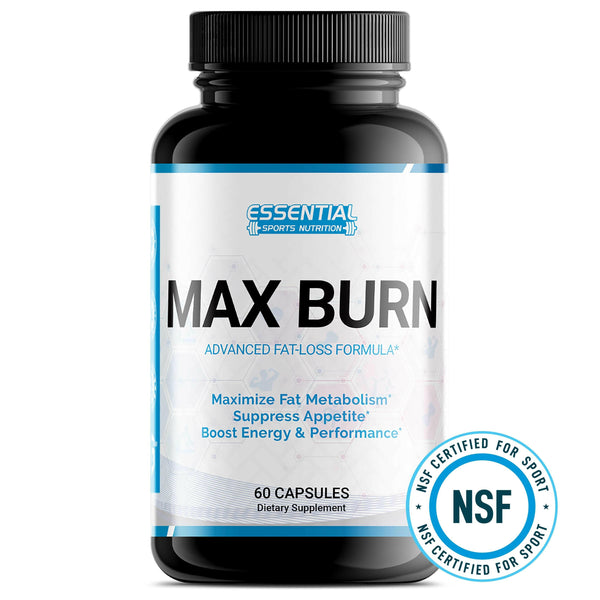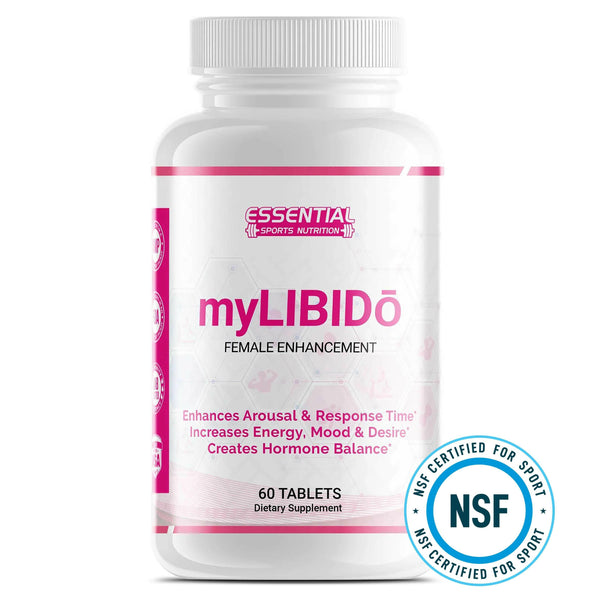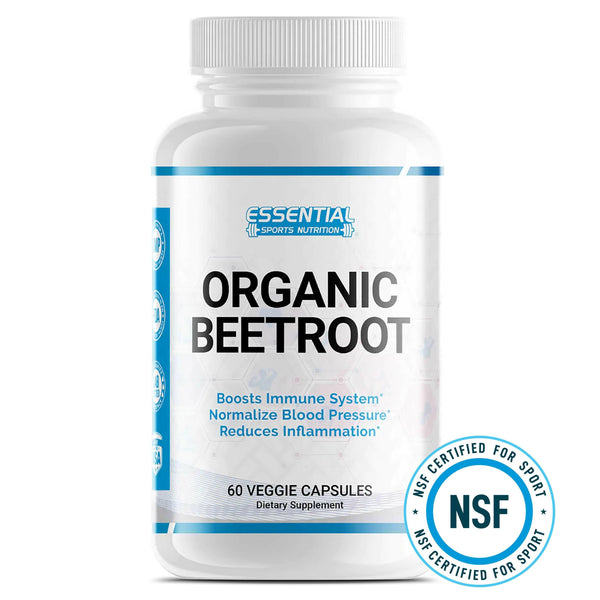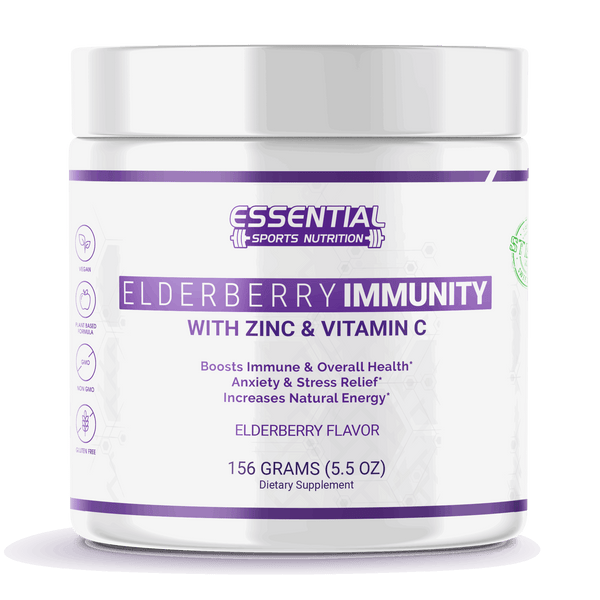The Volumetrics Diet: Weight Loss and Lifelong Health
If you're on a journey to achieve healthy weight loss that lasts, the Volumetrics Diet may hold the key to success. This sustainable approach focuses on filling, nutrient-dense foods that help you stay satisfied while consuming fewer calories. Created by Barbara Rolls, a respected nutrition professor at Penn State University, the Volumetrics Diet is backed by solid scientific evidence.
Key Takeaways:
- The Volumetrics Diet emphasizes eating foods that make you feel full while consuming fewer calories.
- By focusing on nutrient-dense, low-calorie foods, sustainable weight loss is possible.
- The Volumetrics approach incorporates the concept of caloric density to promote feeling satisfied without overeating.
- Foods are categorized based on their caloric density, allowing for informed meal planning and portion control.
- Consult with a healthcare professional before starting any diet to ensure it is suitable for your individual needs.
Understanding the Volumetrics Approach to Weight Loss
The Volumetrics approach to weight loss is centered around the principles of caloric density and energy density. By understanding these concepts and making informed food choices, individuals can achieve their weight loss goals while still feeling satisfied and satiated.
Caloric density refers to the number of calories in a particular volume or weight of food. Foods with low caloric density contain fewer calories per gram, allowing you to eat larger portions without consuming excessive calories. On the other hand, foods with high caloric density are calorie-dense and can lead to consuming more calories in smaller portions.
Energy density, on the other hand, takes into account the water content and fiber content of foods. Foods with high water and fiber content tend to have lower energy density, which means they provide a greater volume of food for fewer calories. These foods, such as fruits and vegetables, help you feel fuller for longer periods, reducing the likelihood of overeating.
By choosing foods with lower caloric and energy densities, you can create a diet that promotes weight loss without the need for strict portion control or deprivation. The Volumetrics approach focuses on incorporating high-volume, low-calorie foods into your meals, such as fruits, vegetables, and whole grains, while still allowing for moderate portions of lean proteins and healthy fats.
The Volumetrics approach to weight loss offers a balanced and sustainable approach that emphasizes the importance of nutrient density and satiety. By understanding the principles of caloric and energy density, individuals can make informed food choices that support their weight loss goals while still enjoying a variety of delicious and satisfying foods.
Caloric and Energy Density of Common Foods
| Food | Caloric Density (kcal/g) | Energy Density (kcal/100g) |
|---|---|---|
| Fruits (e.g., apples, oranges) | 0.4-0.7 | 30-60 |
| Vegetables (e.g., broccoli, spinach) | 0.2-0.6 | 15-30 |
| Lean proteins (e.g., chicken breast, fish) | 2.0-2.4 | 150-200 |
| Whole grains (e.g., quinoa, brown rice) | 2.0-2.5 | 150-200 |
| Fried foods (e.g., french fries, onion rings) | 6.0-8.0 | 400-600 |
This table provides a snapshot of the caloric and energy density of common foods. As you can see, fruits and vegetables have low caloric and energy densities, making them excellent choices for weight loss. Lean proteins and whole grains also fall within a moderate range, while fried foods have much higher densities, indicating they should be consumed sparingly.
By incorporating the Volumetrics approach into your weight loss journey, you can create a sustainable and enjoyable eating plan that promotes satiety, balance, and long-term success.
The Four Categories of Volumetrics Diet Foods

The Volumetrics Diet categorizes foods into four groups based on their caloric density. Understanding these categories can help you make informed choices and optimize your weight loss journey. Here are the four categories:
Category One: Low-Density Foods
Category One includes foods with very low caloric density. These foods can be consumed in larger quantities without adding excessive calories. Examples of Category One foods are fruits, vegetables, and broth-based soups. These options are high in water content and fiber, providing a sense of fullness while keeping calorie intake low.
Category Two: Moderately Low-Density Foods
Category Two includes foods with low caloric density that should be consumed in moderation. This category consists of whole grains, lean proteins, legumes, and low-fat dairy products. While these foods offer essential nutrients, they should be portioned carefully to moderate calorie intake.
Category Three: Higher-Fat Foods
Category Three consists of higher-fat foods, such as cheese and desserts. While these foods have higher caloric density, they can still be incorporated into the Volumetrics Diet. However, they should be consumed in smaller portions and less frequently to maintain a balanced caloric intake.
Category Four: High-Density Foods
Category Four includes high-density foods that should be consumed sparingly. This category comprises foods like fried foods and sugary snacks, which are typically high in calories and low in nutritional value. It is important to limit the intake of these foods as they can hinder weight loss progress.
By understanding the categories of Volumetrics Diet foods, you can choose options that align with your weight loss goals. Incorporating a variety of low-density foods and being mindful of portion sizes can help you achieve sustainable and healthy weight loss.
| Category | Examples | Caloric Density |
|---|---|---|
| Category One | Fruits, vegetables, broth-based soups | Very low |
| Category Two | Whole grains, lean proteins, legumes, low-fat dairy | Low |
| Category Three | Cheese, desserts | Higher |
| Category Four | Fried foods, sugary snacks | High |
How to Follow the Volumetrics Diet
Following the Volumetrics Diet is all about making smart food choices and developing healthy eating habits. By incorporating the principles of the diet into your daily routine, you can achieve sustainable weight loss and improve your overall well-being. Here are some tips on how to follow the Volumetrics Diet:
1. Create a Meal Plan
A meal plan is a helpful tool to ensure you're making balanced food choices and staying within your calorie goals. Start by calculating the energy density of different foods and incorporate them into your meal plan. Aim to include a variety of low-calorie, nutrient-dense foods such as fruits, vegetables, whole grains, and lean proteins.
2. Make Conscious Food Choices
When following the Volumetrics Diet, it's important to be mindful of the foods you choose to eat. Opt for high-water-content foods like fruits and vegetables, which can help you feel full with fewer calories. Avoid foods that are high in fat and sugar, as these tend to have higher energy density and can contribute to weight gain.
3. Keep a Food Journal
A food journal can help you track your daily food intake and make you more aware of your eating habits. Write down everything you eat and drink, including portion sizes. This will help you identify areas where you may be consuming excessive calories and make adjustments to your diet accordingly.
4. Stay Physically Active
Physical activity is an essential component of any weight loss plan. Incorporate regular exercise into your routine to help burn calories and increase your overall fitness levels. Aim for a combination of cardiovascular exercise, strength training, and flexibility exercises to achieve optimal results.
| Meal Plan Example | Food Choices |
|---|---|
| Breakfast | 1 cup of oatmeal with berries and almonds |
| Lunch | Grilled chicken salad with mixed greens and a side of whole-wheat bread |
| Snack | Carrot sticks with hummus |
| Dinner | Salmon with quinoa and roasted vegetables |
| Snack | Greek yogurt with sliced fruit |
By following the Volumetrics Diet and implementing these strategies, you can make healthier food choices, achieve weight loss goals, and improve your overall well-being.
Benefits of the Volumetrics Diet

The Volumetrics Diet offers numerous benefits for those looking to achieve sustainable weight loss and improve their overall health. By incorporating the principles of the diet into your daily eating habits, you can experience increased satiety and enjoy the benefits of nutrient-dense foods.
One of the key advantages of the Volumetrics Diet is its focus on consuming nutrient-dense foods. These foods are packed with essential vitamins, minerals, and other beneficial nutrients that support overall health and well-being. By choosing nutrient-dense options such as fruits, vegetables, whole grains, and lean proteins, you can meet your nutritional needs while reducing calorie intake.
The Volumetrics Diet also promotes increased satiety, or the feeling of fullness that lasts. By including foods with high water content and low energy density, such as fruits and vegetables, in your meals, you can fill up on fewer calories. This can help prevent overeating and support weight loss goals without leaving you feeling deprived.
Additionally, the flexibility of the Volumetrics Diet allows you to enjoy a wide variety of foods. Unlike restrictive diets that eliminate entire food groups, the Volumetrics approach encourages balance and moderation. This makes it easier to stick to the diet in the long term and maintain a healthy lifestyle.
Nutrient-Dense Foods to Incorporate into Your Volumetrics Diet
| Category | Foods |
|---|---|
| Category One | Fruits, vegetables, broth-based soups |
| Category Two | Whole grains, lean proteins, legumes, low-fat dairy |
By including these nutrient-dense foods in your diet, you can enjoy the benefits of increased satiety and improved overall nutrition while achieving sustainable weight loss.
How Volumetrics Helps with Weight Loss
The Volumetrics Diet is an effective method for weight loss that focuses on reducing calorie intake while promoting a feeling of fullness. By incorporating the principles of the Volumetrics Diet into your lifestyle, you can achieve your weight loss goals and develop healthy eating habits.
One of the key reasons why the Volumetrics Diet is successful for weight loss is its emphasis on foods that make you feel full. By choosing foods that have high water content and low energy density, such as fruits and vegetables, you can consume larger portions without consuming excessive calories. This helps to reduce overall calorie intake while still satisfying your hunger.
Another benefit of the Volumetrics Diet is its focus on calorie reduction. By identifying foods that are low in energy density and incorporating them into your meals, you can reduce the overall calorie content of your diet. This calorie reduction, combined with the consumption of nutrient-dense foods, can lead to sustainable weight loss over time.
Foods with High Water Content and Low Energy Density
| Food | Water Content | Energy Density |
|---|---|---|
| Watermelon | 92% | 0.30 kcal/g |
| Cucumber | 96% | 0.16 kcal/g |
| Strawberries | 91% | 0.32 kcal/g |
| Spinach | 91% | 0.23 kcal/g |
| Broccoli | 91% | 0.34 kcal/g |
The Volumetrics Diet also focuses on promoting healthy eating habits. By understanding portion sizes and making conscious choices about the types of foods you consume, you can develop long-term healthy eating habits that support weight loss. This includes incorporating a variety of nutrient-dense foods, such as whole grains, lean proteins, and vegetables, into your meals.
In conclusion, the Volumetrics Diet is a proven method for weight loss that emphasizes feeling full, reducing calorie intake, and developing healthy eating habits. By incorporating the principles of the Volumetrics Diet into your lifestyle, you can achieve sustainable weight loss and improve your overall health and well-being.
Tips for Following the Volumetrics Diet

If you're considering following the Volumetrics Diet, here are some tips to help you get started:
1. Incorporate meal preparation into your routine
Meal preparation is key to success on the Volumetrics Diet. Set aside time each week to plan and prepare your meals in advance. This will ensure that you have healthy, nutrient-dense options readily available and minimize the temptation to reach for high-calorie, low-nutrient foods.
2. Choose high-water-content foods
High-water-content foods include fruits and vegetables. They are low in calories but high in volume, meaning you can eat more of them while still keeping your calorie intake in check. Incorporate a variety of colorful fruits and vegetables into your meals to maximize their nutritional value.
3. Practice portion control
Portion control is an important aspect of the Volumetrics Diet. While you can enjoy a wide variety of foods, it's crucial to be mindful of portion sizes. Use measuring cups or a food scale to accurately measure your servings, especially for higher-calorie foods. This will help you stay within your calorie goals and maintain a healthy balance.
By following these tips, you can successfully navigate the Volumetrics Diet and achieve your weight loss goals. Remember to listen to your body's hunger and fullness cues, stay hydrated, and make conscious choices about the types of foods you consume. With time and practice, you'll develop healthier eating habits that can be sustained for long-term success.
Criticisms of the Volumetrics Diet

The Volumetrics Diet, while widely regarded as an effective and sustainable weight loss approach, has faced some criticisms and limitations. One common criticism is the time and effort required for meal preparation. With its focus on incorporating low-energy-density foods, such as fruits and vegetables, into meals, the diet necessitates more time spent on chopping, cooking, and planning. This can be challenging for individuals with busy schedules or limited culinary skills.
Another criticism revolves around the food density categories used in the Volumetrics Diet. While the categorization helps individuals understand the caloric density of different foods, some argue that it can be confusing or restrictive. Critics argue that the rigid categorization may oversimplify the complexity of food and limit dietary variety, especially for individuals with specific dietary restrictions or preferences.
Despite these criticisms, it's worth noting that the Volumetrics Diet has been successful for many individuals. The diet's emphasis on consuming nutrient-dense, low-calorie foods has been shown to promote satiety and sustainable weight loss. While it may not be suitable for everyone, incorporating Volumetrics principles, such as choosing high-water-content foods and practicing portion control, can still be beneficial in maintaining a healthy lifestyle.
Expert Opinions on the Volumetrics Diet

Experts in the field of nutrition generally hold positive opinions about the Volumetrics Diet. They recognize its effectiveness in promoting sustainable eating patterns and achieving healthy weight loss. Nutritionists recommend the Volumetrics Diet because it encourages individuals to focus on consuming nutrient-dense, low-calorie foods.
The diet aligns with the recommendations of nutrition professionals, emphasizing the importance of balanced meals and portion control for maintaining a healthy weight. By incorporating the principles of the Volumetrics Diet, individuals can develop a better understanding of their food choices and make long-lasting changes to their eating habits.
According to nutrition experts, the Volumetrics Diet is a practical approach to weight loss because it allows individuals to enjoy a wide variety of foods while still achieving their goals. By emphasizing the consumption of foods that are low in energy density, individuals can feel satisfied and maintain a calorie deficit, leading to sustainable weight loss over time.
It is important to note that before starting any diet, it is always recommended to consult with a healthcare professional to ensure it is suitable for your individual needs and health conditions. They can provide personalized recommendations and guidance to help you achieve your weight loss goals in a safe and healthy manner.
Incorporating Volumetrics Principles into Your Lifestyle

While following the Volumetrics Diet strictly may not be feasible for everyone, you can still incorporate its principles into your lifestyle to achieve a healthier way of eating. By adopting healthy eating habits and choosing low-energy-density foods, you can make lasting changes that support sustainable weight loss.
Healthy Eating Habits
One of the key principles of the Volumetrics Diet is to focus on nutrient-dense, low-calorie foods. Incorporating more fruits and vegetables into your meals is a simple yet effective way to achieve this. These foods are not only low in calories but also high in fiber, vitamins, and minerals, making them an essential part of a healthy diet. Additionally, choosing whole grains and lean proteins can help you feel satisfied while still consuming fewer calories.
Low-Energy-Density Foods
Another important aspect of the Volumetrics approach is the concept of low-energy-density foods. These are foods that have a high water content and low calorie density, which means they take up more space in your stomach while containing fewer calories. Incorporating more low-energy-density foods, such as fruits, vegetables, and soups, can help you feel fuller for longer while consuming fewer calories overall. This can support weight loss efforts and help you maintain a healthy eating pattern in the long term.
| Low-Energy-Density Foods | High-Energy-Density Foods |
|---|---|
| Fruits | Fried foods |
| Vegetables | Sugary snacks |
| Broth-based soups | High-fat foods like cheese and desserts |
| Whole grains | |
| Lean proteins |
By incorporating these principles into your lifestyle, you can make healthier food choices and develop sustainable eating habits. Remember to listen to your body's hunger and fullness cues and practice portion control to ensure you're consuming an appropriate amount of calories. Making these changes gradually and finding enjoyment in the process can lead to long-lasting results and improved overall well-being.
Conclusion
The Volumetrics Diet is an effective and sustainable approach to weight loss that emphasizes healthy eating habits. By focusing on consuming nutrient-dense, low-calorie foods, individuals can achieve their weight loss goals without feeling deprived.
With its emphasis on portion control and understanding food density, the Volumetrics Diet provides a flexible and practical way to maintain a balanced lifestyle. By incorporating more fruits, vegetables, whole grains, and lean proteins into meals, individuals can feel satisfied while consuming fewer calories.
By following the principles of the Volumetrics Diet, individuals can not only achieve sustainable weight loss but also develop long-term healthy eating habits. Listening to the body's hunger and fullness cues and practicing portion control are key components of this approach.
The Volumetrics Diet offers a viable and effective solution for those seeking to lose weight and improve their overall health. By adopting this approach, individuals can enjoy the benefits of sustainable weight loss and develop lifelong healthy eating habits.
Volumetrics Diet Plan FAQs
Q: What is the Volumetrics Diet Plan?
A: The Volumetrics Diet Plan focuses on consuming foods that are low in energy density, such as fruits, vegetables, and broth-based soups, to help individuals feel full and satisfied while consuming fewer calories.
Q: What are the Pros of the Volumetrics Diet?
A: The Volumetrics Diet allows individuals to consume a variety of nutritious and filling foods, promotes weight loss without extreme calorie restriction, and encourages a sustainable and lifelong approach to healthy eating.
Q: What are the Cons of the Volumetrics Diet?
A: Some drawbacks of the Volumetrics Diet include the potential for individuals to consume too many high-calorie, low-density foods, and the need to carefully monitor portion sizes to achieve weight loss goals.
Q: What are some foods to eat on the Volumetrics Diet?
A: Foods to eat on the Volumetrics Diet include fruits, vegetables, lean proteins, whole grains, legumes, and broth-based soups, as well as other water-rich and high-fiber options.
Q: Can you provide a sample menu for the Volumetrics Diet?
A: A sample menu for the Volumetrics Diet may include oatmeal with berries for breakfast, a large vegetable salad with grilled chicken for lunch, and a vegetable stir-fry with brown rice for dinner.
Q: What is the Penn State connection to the Volumetrics Diet?
A: The Volumetrics Diet was developed by Barbara Rolls, a nutrition researcher at Penn State University, who has published several books on the topic and conducted extensive research on the benefits of low-energy-density eating.
Q: How can I lose weight on the Volumetrics Diet?
A: To lose weight on the Volumetrics Diet, individuals should focus on consuming predominantly low-density foods, managing portion sizes, and paying attention to hunger and fullness cues to avoid overeating.
Q: Does the Volumetrics Diet recommend specific weight loss goals?
A: The Volumetrics Diet does not emphasize specific weight loss goals but rather encourages individuals to adopt a healthy eating pattern that leads to gradual, sustainable weight loss over time.
Q: What are some issues that the Volumetrics Diet doesn't address?
A: The Volumetrics Diet may not specifically address individualized nutritional needs or offer guidance on meal planning for specific dietary restrictions or health conditions.
Q: Should I try the Volumetrics Diet?
A: You may want to consider trying the Volumetrics Diet if you prefer a flexible approach to weight loss and are interested in increasing your consumption of whole, nutrient-dense foods while learning to manage portion sizes effectively.



